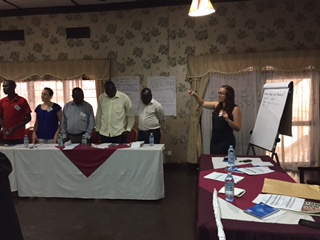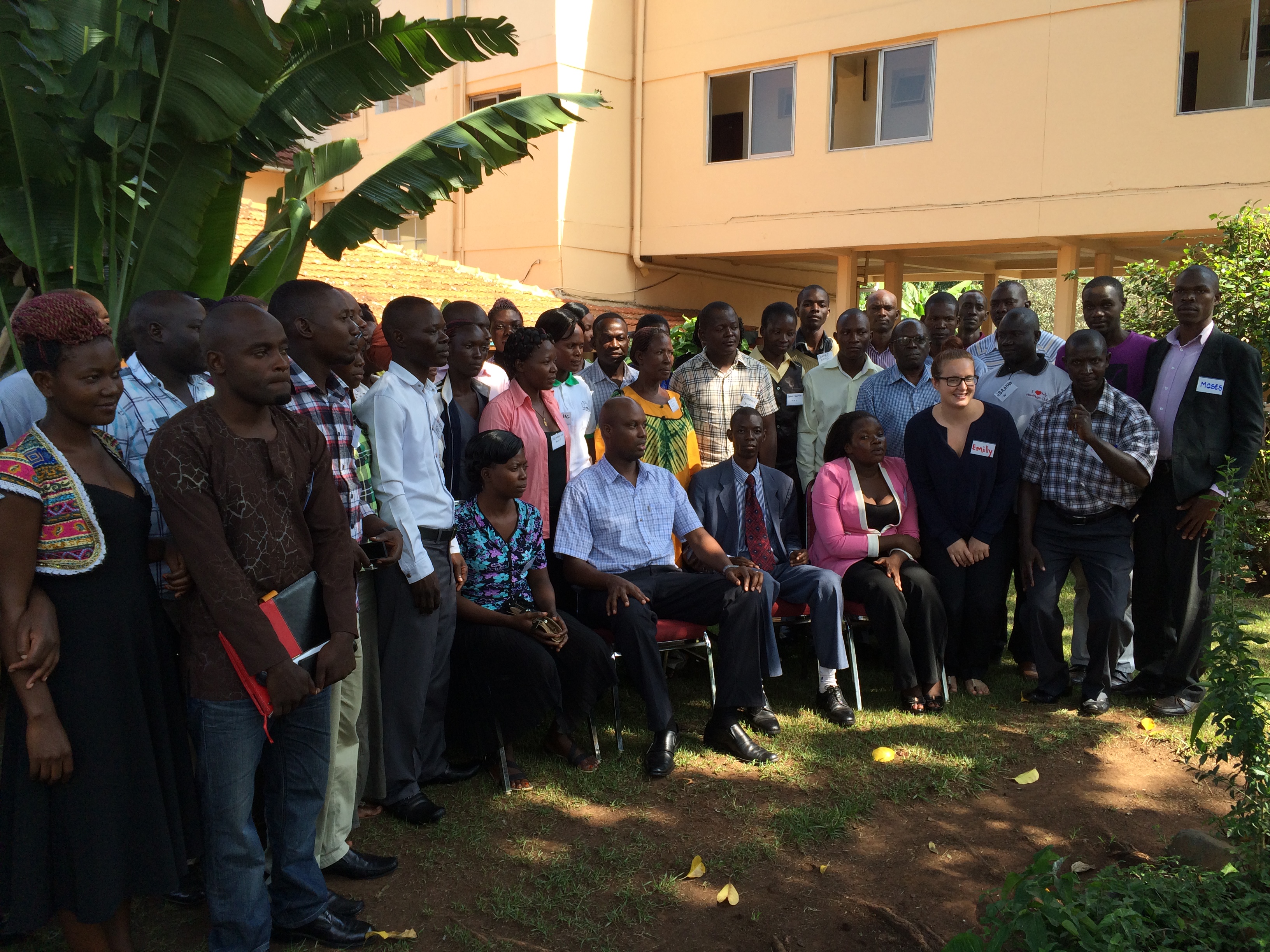Conflict Monitor Training in Jinja
This week we traveled to Jinja to perform a Conflict Monitor Training with Albert Mugumya, our Conflict Prevention and Reconciliation Officer. Jinja is in the eastern part of Uganda, and it sits on the source of the River Nile at Lake Victoria. The Nile is comprised of water from both Lake Victoria and underground springs at its source. Because of the natural power of the water flowing from the underground springs into the Nile, Uganda harvests most of its electricity from a dam located in Jinja.
On the first day of the training, I learned that many attendees weren’t sure why they were there at first. The SAFE Program reaches out to community leaders around Uganda for recommendations of people who can monitor and report conflict incidents. We ask for people who are well-respected members of the community, who are literate, and who own cell phones. Then, we send the recommended people an invitation letter with an information packet about the SAFE Program and Conflict Monitors. Although they receive an information packet, it seems like many people don’t fully understand what the training is or what they will be expected to do. They come because they are hoping to receive the knowledge and experience of a training put on by a USAID organization, and maybe get a t-shirt, too.
Only a few hours into the day, however, and all of the participants were in the full swing of thinking critically about conflict, violence, and peace. Albert discussed a few tools for conflict analysis and the importance of asking others in the community a lot of questions about an incident before reporting it. Later, we broke into groups by District and the attendees listed 5 burning conflicts in their communities, possible solutions for each conflict, and who can implement the solutions. The SAFE Program includes this to get people thinking about the nature of conflict in their communities and what can be done to control the tensions, and also to collect new information about conflicts that need to be addressed and community organizations that we can partner with.

On the second day of the training, I led a recap of what we learned the day before. It was pretty incredible to see how quickly people picked up on the key issues. After that, Albert taught the participants how to report conflict incidents safely. The main recommendation was, of course, to tell no one that you are reporting the conflict, and maintain a casual attitude when you are verifying information about what happened. Finally, Albert led them through the technical aspects of reporting a conflict, and the attendees received certificates and Conflict Monitoring manuals.
Although 50 people attended the Conflict Monitoring Training, only about 20 of those people will go on to report conflicts to the SAFE Program. Even so, it was an intense two-day program, and every person who attended will bring new knowledge about conflict into their communities and can teach others about thinking critically about the root causes of conflicts and what can be done to control tensions.
